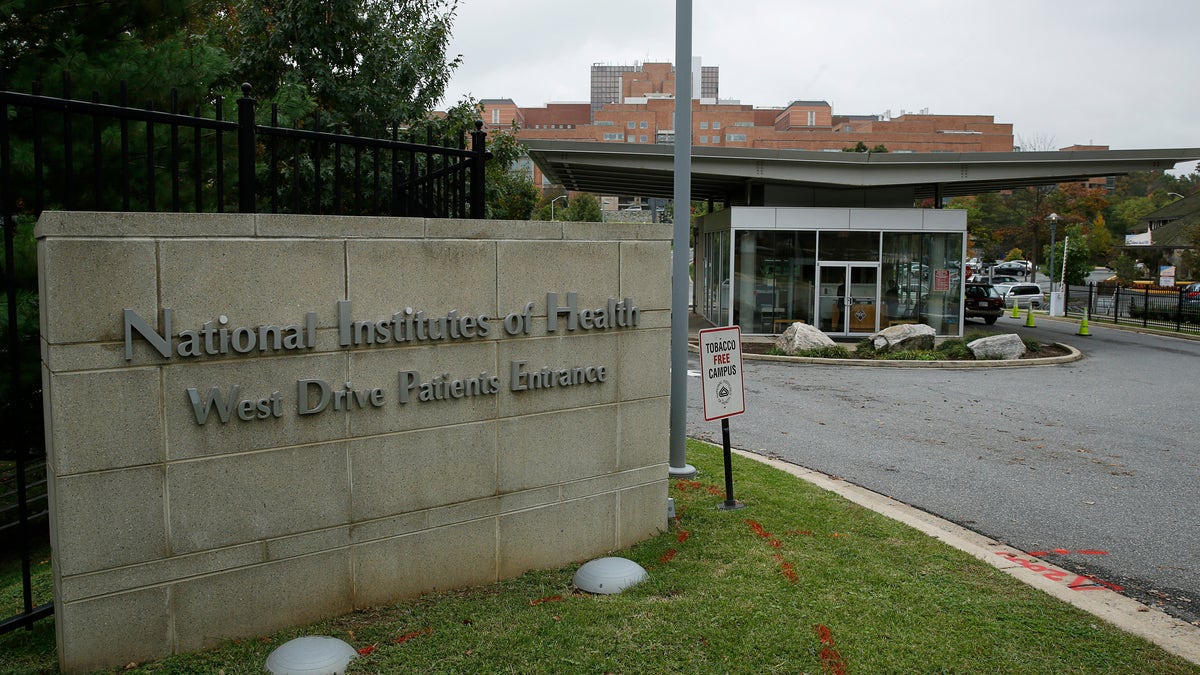
The patient's entrance at the National Institutes of Health is shown in Bethesda, Maryland October 16, 2014. REUTERS/Gary Cameron
Every year since 2006 in the U.S., the amount of new medical research in humans that’s funded by the National Institutes of Health (NIH) has gone down, while the number of industry-funded trials has gone up, a new study shows.
Analyzing the ClinicalTrials.gov database, researchers found that after trial registration became a requirement for publication in major scientific journals in 2005, the number of newly registered trials rose from 9,321 in 2006 to 18,400 in 2014.
NIH-funded trials dipped slightly from 1,376 in 2006 to 1,048 in 2014, while industry trials increased from 4,585 to 6,550.
Adjusted for inflation, the NIH budget fell by 14 percent over this period, which may explain some of the decrease, according to the authors of the research letter in JAMA.
The pharmaceutical industry tests its own products, while the NIH funds tests of treatment approaches, including lifestyle interventions or drug comparisons, which industry tends not to fund because they do not lead to an increase in their bottom line, said coauthor Dr. Stephan Ehrhardt of Johns Hopkins Bloomberg School of Public Health in Baltimore.
“That’s important for the general public, I think, because if we only get industry funded trials off the ground and given that the industry has a vested interest in the outcome of those trials then we don’t get good data to inform health of the public,” Ehrhardt told Reuters Health by phone.
“I’m a little bit worried about this imbalance,” he said.
While industry trials did increase, most of the surge in registration was driven by a third “other” category, which included more than 10,000 trials by 2014. These were often conducted by researchers outside the U.S. who registered their trials in the U.S. database anyway, since ClinicalTrials.gov acts as a de-facto international registry.
Those numbers don’t affect the discussion about NIH funded trials in the U.S., Ehrhardt said.
“Most people trust federal sponsorship more than industry sponsorship,” said Brian P. Kavanagh, chair of the Department of Anesthesia at the University of Toronto, who was not part of the new research letter. “Industry is paying, and naturally hopes to get a specific result, as they are trying to sell a drug.”
“If you’re the average patient you would like to have the best treatment that gives you the least amount of side effects,” and those decisions are made based on NIH funded trials, which do not have a commercial interest in the outcome, said Andrea M. Denicoff of the National Cancer Institute, who was not part of the new study.
On the other hand, as federal research budgets have decreased in the U.S. and Canada, more industry sponsorship could allow trials to be conducted that would not otherwise have been possible, and new treatments made available, Kavanagh told Reuters Health by phone. An overall increase in registration of trials is positive, he said.
“Before trial registration became a requirement for publication in journals, trials were started and negative results or unfavorable results were in many cases simply not published,” so as registration has increased, so has transparency, he said.
There are two ways to increase the number of NIH-funded trials, Ehrhardt said: increase the NIH budget, which seems unlikely, or specify focus areas for the NIH research budget, for example, on studies with implications for the largest number of people.
The National Cancer Institute Molecular Analysis for Therapy Choice (MATCH) trial includes 10 arms, or substudies, and new treatments can be added or dropped from the trial over time. This “umbrella trial” design helps maximize efficient use of funds, Denicoff told Reuters Health by phone.
Clinical trial registration is not internationally mandated, so it is hard to know if this trend of decreasing federally funded trial research is happening elsewhere, said Dr. Vojtech Huser of the NIH, National Library of Medicine.
